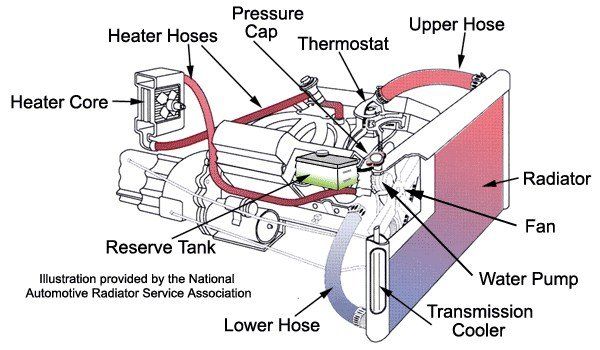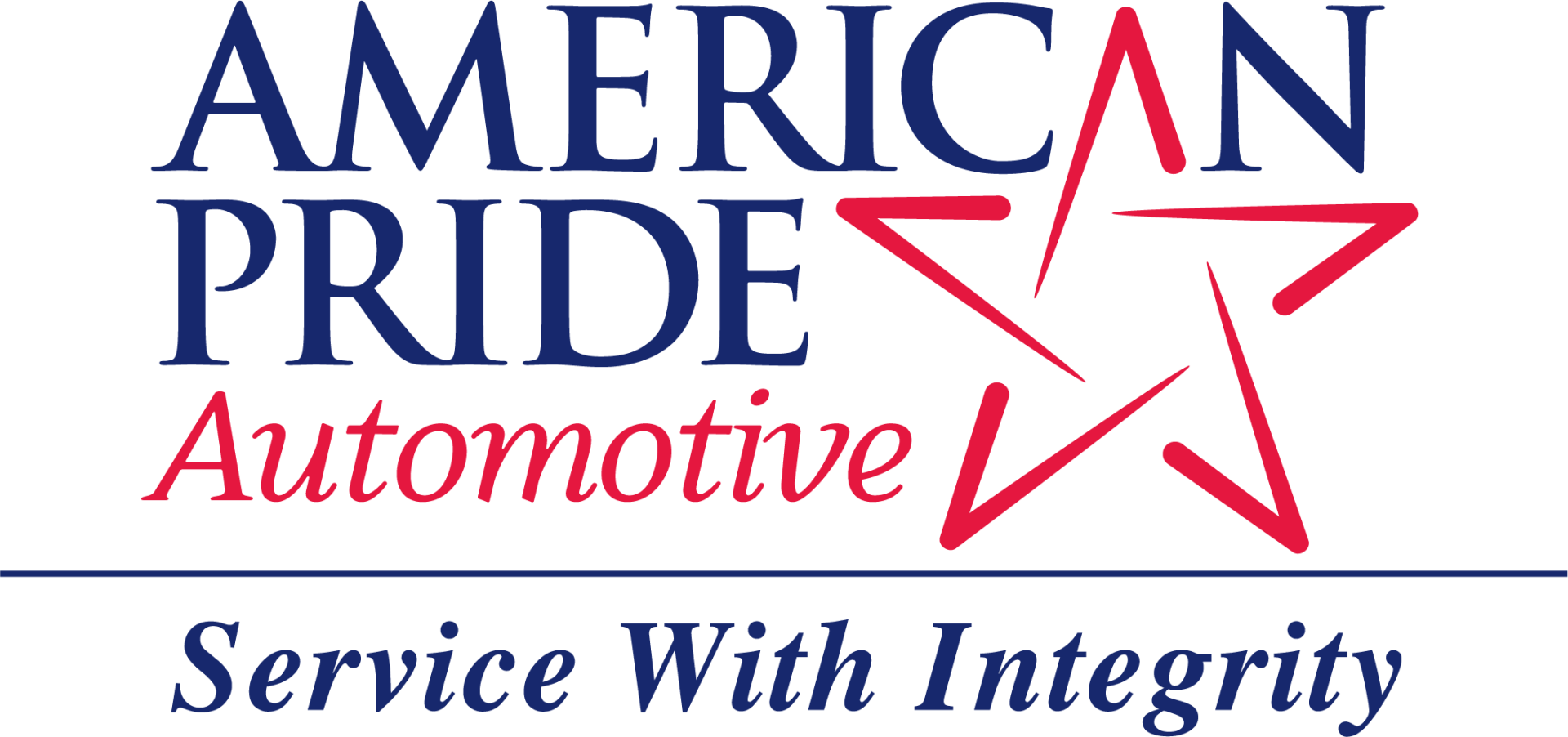MAINTAINING YOUR COOLING SYSTEM: FLUSHING AND REPLACING COOLANT
American Pride Automotive • April 5, 2019
Along with flat tires and low or faulty batteries, an overheating engine is one of the leading causes of car breakdowns. An engine can overheat for many reasons, but coolant issues are often to blame. When antifreeze is dirty or running low because of non-replacement or a leak, the engine’s ability to stay cool under pressure is inhibited. That’s why it’s important that you make flushing and replacing your coolant a part of routine auto maintenance.
American Pride can inspect your radiator system and flush/replace antifreeze, but if you want to do it yourself for the first time, take a look at our handy guide.
*SAFETY NOTES:
Antifreeze is highly toxic. Dispose of it into a container with an airtight lid and take care to not let any wash into storm drains. Check local regulations regarding safe disposal of coolant (Find your Hampton Roads area hazardous waste disposal site here) and keep it away from children and animals!
Never remove a hot radiator cap. Despite its name, coolant can get VERY hot and will burn you if you don’t flush the system when the engine is cool.
Be sure to wear gloves and safety goggles throughout the whole process.
What you will need:
- 1-2 gallons of antifreeze (Check your vehicle’s owner’s manual for the manufacturer recommended type and brand.)
- 2 gallons of distilled water
- A garden hose
- Radiator flush solution (optional)
- A disposable drainage pan
- A funnel
- A few large, sealable containers

Ok, let’s flush that cooling system! As you proceed, stay on the lookout for cracked or worn hoses and plugs that may need replacement.
1. DRAIN THE OLD COOLANT
Place your disposable drainage pan under the vehicle, below the radiator. Assuming that you’ve lifted your hood and have the owner’s manual on hand, find the radiator drain plug. It will be along the bottom of the radiator and might be a screw plug, a bolt plug, or a petcock. If it’s a screw or a bolt, remove it completely. If it’s a petcock, open it all the way and let the old coolant drain into the pan.
Once all the coolant has drained, close the petcock (or replace the screw/bolt) and use the funnel to transfer the old fluid to one of the sealable containers.
2. FLUSH THE SYSTEM
It’s flushing time! Remove the radiator fill-cap and, if you choose to use it, pour in a container of flush solution. Then take the garden hose and fill the rest of the upper radiator with water. With the drainage pan under the radiator, open the petcock and allow the water to pour out. Repeat this process until the water comes out clear. Dispose of the rinsing water like you did the old coolant in a sealable container. Close the petcock.
3. ADD FRESH COOLANT
When you’re certain that the system is squeaky clean, you can add the new coolant. Unless your car calls specifically for premixed 50/50 antifreeze, fill half of the compartment with distilled water and the other half with the unmixed antifreeze. Do not replace the radiator cap just yet!
4. BLEED THE SYSTEM
Now it’s time to “bleed” the system, which is merely the process of eliminating air pockets from the radiator system. With the radiator cap off, start your engine. Let it run for about 10 minutes and then turn your heater on to its highest setting for about another 10. Turn your vehicle off and let the engine cool.
5. TIE UP LOOSE ENDS
Carefully add a little more antifreeze to replace any lost in the bleeding process and replace the fill-cap. You’re almost good to go, but wait!
Double check that no coolant has leaked under your car. Even a small puddle can make its way into storm drains or prove fatal to curious animals. Collect the sealed containers and get them to a hazardous waste disposal facility ASAP. And make sure you wash your hands, even if you wore gloves.
Flushing and replacing your coolant on a regular basis can help you avoid the dreaded smoking engine and maximize your car’s performance for the long term. American Pride recommends changing antifreeze every two years (but check your owner’s manual for the maker’s recommendation). When you bring your vehicle to us for this service, we don’t stop at just draining and refilling your coolant. Instead, our team performs a full radiator inspection and flushing service that includes:
- System inspection and pressure test for leaks
- Addition of flush chemicals to the radiator
- Power-flushing system through flush machine
- Refilling system with proper amount of anti-freeze
- Addition of sealant/lubricant to the system
- A 6-month/6,000-mile warranty
Does your radiator system need a tuneup or perhaps some repairs? American Pride is here to give you expert service and answers to any automotive questions you might have. Call, contact us or stop in today.

You’re driving home at night and it is raining cats and dogs. You can’t see but 20 feet in front of your car, but you’ve slowed down and are being extra cautious, so what could go wrong? Then you feel it. A sinking Cl-clunk. Maybe that “puddle” you saw ahead of you was deeper than just a puddle. Before you know it, your car is stalling in the high water in the middle of the road. Now what? First off, don’t panic. Turn on your hazards and crank the ignition once. If the car starts, make it dry land and pull over to assess the damage. If it does not start the first time, do not try to start it again. Doing so can result in a hydro locked engine and will likely necessitate the rebuilding or replacement of the engine. Unfortunately, if you find yourself stalling in water at all, your vehicle will probably need costly repairs. The best way to avoid water damage is to practice safe and smart driving in wet weather, which brings us to Part 2 of the Everything Auto “Blame it on the Rain” series (Find Part 1 here). Take heed of these severe weather driving tips: 1. TAKE NO CHANCES ON PUDDLES Even if the standing water ahead of you looks shallow enough to drive through, think twice. If the water is “rushing” or if other drivers are making a point to avoid it, don’t assume that your vehicle is the exception. Additionally, you never know the hazards that lay at the bottom of a puddle. Hidden potholes or debris can pierce your tires and jostle your alignment and suspension system. 2. IF YOU MUST TAKE A CHANCE, TAKE IT SLOW AND STEADY When you deem it necessary and safe to drive through water of questionable depth, go slowly. Speeding through a puddle, even a shallow one, can splash water into your vehicle’s intake and critically harm the engine. Like we mentioned last week, after driving through standing water, lightly tap your brakes to make sure they aren’t saturated and to dry them off. 3. KEEP A ROADSIDE EMERGENCY KIT HANDY Sometimes, no matter how careful you are on the road, accidents and vehicle malfunctions happen, especially in wet severe weather. That’s why it is extremely important to keep emergency supplies ready in the trunk for the worst case scenario. You can buy a preassembled one, but it is cheaper (and more rewarding) to assemble your own. What should you include? Edmunds.com provides an excellent comprehensive list of items, a few of which include: 12-foot jumper cables Four 15 minute road flares Two quarts of oil A gallon of antifreeze A first-aid kit. Find the rest of the list here We hope that this series has given you helpful safety insights and tips for driving in the rain! Remember that American Pride Automotive is always here to help and ready to answer any and all of your auto repair and maintenance questions! Call or contact us today.
